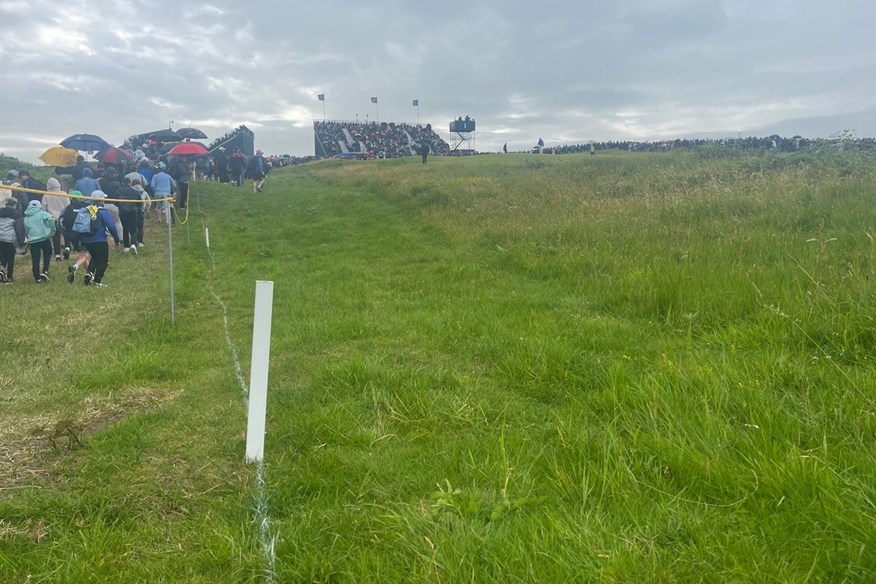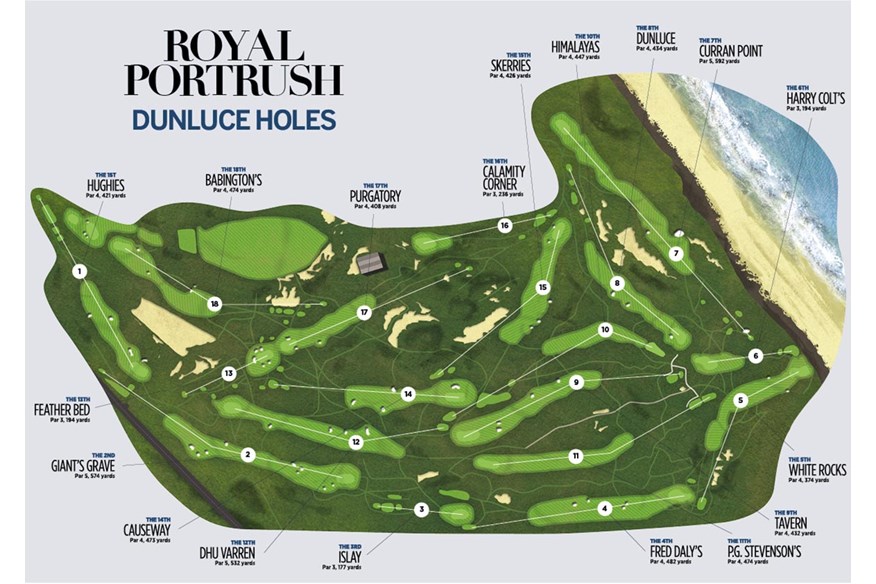Why is there internal out of bounds at Royal Portrush?
Last updated:

The dreaded white stakes run down either side of the three-time Open venue’s first hole. But what purpose do they serve? Let’s dive in…
If you didn’t know about the internal out of bounds that flanks either side of the opening hole at Royal Portrush before the 2019 Open – you certainly did by the time Rory McIlroy had walked off the green and scratched an 8 into his scorecard.
McIlroy had arrived in Northern Ireland as the hot favorite to end what was at the time a five-year major drought. But, as his TaylorMade ball sailed into the thick stuff on the wrong side of the white stakes, his chin slumped into his chest and the golf world exhaled as his chances all but evaporated in one swing.
McIlroy would go on to card a 79 and, although he rallied with a 65 on day two, it wasn’t enough to make it to the weekend.
Fast forward six years and the internal out of bounds is already causing carnage at The Open. Ben Griffin, one of the most in-form players on the planet, was among those to fall foul of it in the early hours of the 153rd Open Championship.
So let’s get to the reason you’re here…
Why is there internal out of bounds on the first hole at Royal Portrush?

The Rules of Golf – notably Model Local Rule A-4 – say it is “for course design or safety reasons” adding that “a committee can choose to specify that a particular part of the course is out of bounds during the play of a particular hole”.
They add: “This is done to stop players who are playing that hole from playing to and from another part of the course. For example, on a dogleg hole, an internal out of bounds may be used to prevent a player from cutting the dogleg by playing a ball to the fairway of another hole.”
In a nutshell, to prevent golfers from playing the course as it wasn’t intended in order to gain an advantage, and in doing so, ensuring the safety of other players.
But Royal Portrush use the OB stakes for a very different reason.
For many years, the golf club did not own the land to the right of the opening hole. Nor did it own the triangle of land between the 1st and 18th holes. So both areas were simply out of bounds because that was, quite literally, the case.
It meant the likes of Peter Thompson, Bobby Locke, eventual winner Max Faulkner, and Fred Daly – Ireland’s original major champion who was born but a flick of a wedge from Portrush’s clubhouse – had to tee off with farm animals grazing just yards away from the fairway.

And that’s how it was when the Claret Jug made its first trip across the Irish Sea back in 1951 for the 80th edition of golf’s oldest major. But between then and 2019, the club acquired both areas of land, so why did the internal out of bounds remain?
The answer is simple.
Despite there being no real advantage to putting your ball beyond the fairway on either side, RPGC and its members have continued to play the course this way.
And, as the then chief executive of The R&A Martin Slumbers said ahead of the 2019 Open: “We try to stay true to how the course is played.”
And that is how it will remain for the 153rd Open this week.
So there you have it. Our old friend tradition up to its old tricks.
As a result, it creates one of the most intimidating opening tee shots in major championship golf.
Jason Day, who three-putted the hole for an opening bogey, explained why the 425-yard par-4 – which is called “Hughie’s” after the chap who sold the land to the golf club – is so hard.
“It’s 270 to the first part on the right and then 290-ish to the second part on the left,” he said. “You’ve got to thread it. Wind in out of the right, out of bounds, and long rough to an elevated green.
“Once you’re in the rough, it’s very difficult to control the ball coming into it. The greens are so firm, so it’s hard to get the correct distance landing it. And you’ve got to hit the fairway there to get yourself in good position to be able to like get yourself on the green to at least give yourself a chance to birdie.”
On Friday, the hole claimed a double victim in Jacob Skov Olesen.
The Dane was co-leading The Open overnight after a 1st-round 67, but plummeted down the leaderboard after he first went OB right, then left, then eventually made a double-bogey 8.
